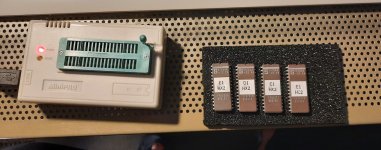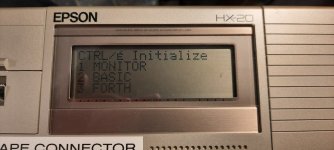Dave,
Martin is in Germany, and has produced some brilliant stuff for the HX, incl a PDF covering a wide range of useful info about the device.
Actually, there IS a disassembler for the 6301. Something called DASMX. I'll attach a .ZIP of the system. This is a multi-processor system, so it's a fairly complex package. I had a play with, did enough to confirm that it DOES work, but it was too much trouble for my immediate needs so I didn't go much further. But it could well be worth YOUR trouble for what you're trying to do.
There is also the disassembler that Julian Wald produced, I've got that, and that certainly works, BUT on the HX only (DASMX is a PC system) and it outputs to the HX printer. This may not be any use to you, esp as a substantial part of the code is HX ASM. Aside, it may actually be the work of Elizabeth Wald, I think the original article was under her byline.
Keep up the great work.
Geoff


